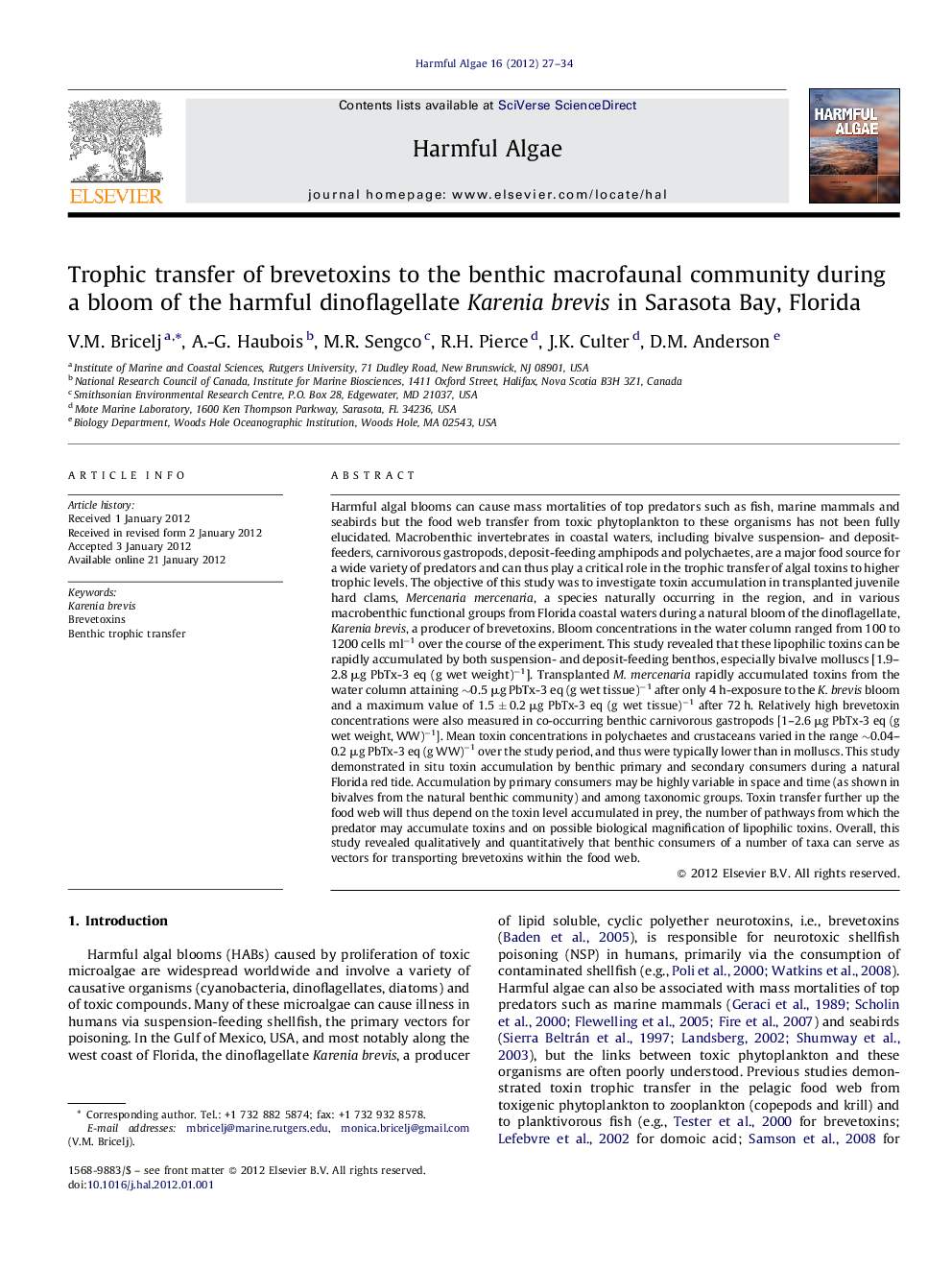| Article ID | Journal | Published Year | Pages | File Type |
|---|---|---|---|---|
| 4545613 | Harmful Algae | 2012 | 8 Pages |
Harmful algal blooms can cause mass mortalities of top predators such as fish, marine mammals and seabirds but the food web transfer from toxic phytoplankton to these organisms has not been fully elucidated. Macrobenthic invertebrates in coastal waters, including bivalve suspension- and deposit-feeders, carnivorous gastropods, deposit-feeding amphipods and polychaetes, are a major food source for a wide variety of predators and can thus play a critical role in the trophic transfer of algal toxins to higher trophic levels. The objective of this study was to investigate toxin accumulation in transplanted juvenile hard clams, Mercenaria mercenaria, a species naturally occurring in the region, and in various macrobenthic functional groups from Florida coastal waters during a natural bloom of the dinoflagellate, Karenia brevis, a producer of brevetoxins. Bloom concentrations in the water column ranged from 100 to 1200 cells ml−1 over the course of the experiment. This study revealed that these lipophilic toxins can be rapidly accumulated by both suspension- and deposit-feeding benthos, especially bivalve molluscs [1.9–2.8 μg PbTx-3 eq (g wet weight)−1]. Transplanted M. mercenaria rapidly accumulated toxins from the water column attaining ∼0.5 μg PbTx-3 eq (g wet tissue)−1 after only 4 h-exposure to the K. brevis bloom and a maximum value of 1.5 ± 0.2 μg PbTx-3 eq (g wet tissue)−1 after 72 h. Relatively high brevetoxin concentrations were also measured in co-occurring benthic carnivorous gastropods [1–2.6 μg PbTx-3 eq (g wet weight, WW)−1]. Mean toxin concentrations in polychaetes and crustaceans varied in the range ∼0.04–0.2 μg PbTx-3 eq (g WW)−1 over the study period, and thus were typically lower than in molluscs. This study demonstrated in situ toxin accumulation by benthic primary and secondary consumers during a natural Florida red tide. Accumulation by primary consumers may be highly variable in space and time (as shown in bivalves from the natural benthic community) and among taxonomic groups. Toxin transfer further up the food web will thus depend on the toxin level accumulated in prey, the number of pathways from which the predator may accumulate toxins and on possible biological magnification of lipophilic toxins. Overall, this study revealed qualitatively and quantitatively that benthic consumers of a number of taxa can serve as vectors for transporting brevetoxins within the food web.
► Benthic macrofauna accumulate toxins during a Karenia brevis bloom in Sarasota Bay. ► Hatchery-produced juvenile Mercenaria mercenaria also accumulate PbTxs in the field. ► We determine toxicities in bivalves, gastropods, polychaetes and crustaceans. ► Bivalves consistently accumulated the highest toxicities, followed by gastropods. ► Different benthic functional groups can potentially transfer PbTxs up the food web.
